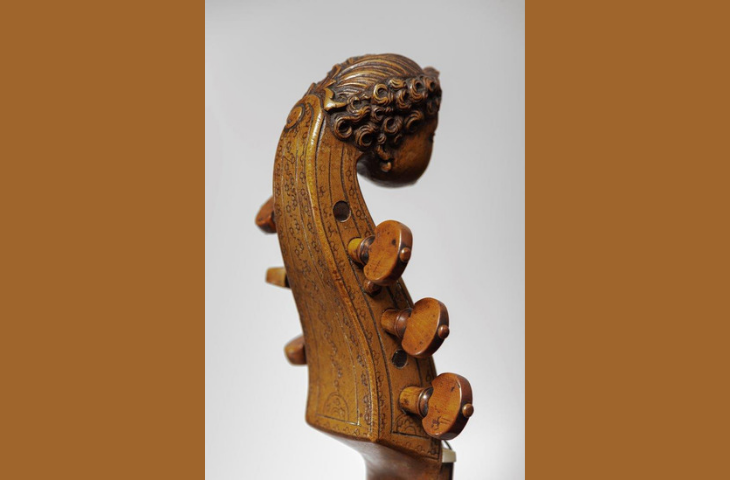March 2024
Fig.1

Pardessus de viole, Pierre Saint-Paul, Paris, 1742, inv. 1395
Fig.2

Pardessus de viole (detail), Pierre Saint-Paul, Paris, 1742, inv. 1395
The pardessus de viole: history and characteristics
The pardessus de viole (fig.1) is a bowed string instrument about the size of a violin, but played on the knees rather than on the shoulder. It is the smallest member of the viola da gamba family. The instrument has six strings, C-shaped soundholes, and movable frets. The pegbox of pardessus no. 1395 is topped with a carved head (fig. 2), a common feature of this type of instrument. Inside the body is a label that reads: Pierre Saint-Paul rue Saint, André des Arts à Paris 1742.
The pardessus was invented around 1700. In France, it enjoyed considerable success during the first half of the 18th century, but it was gradually seen as a substitute for the violin, particularly for women and amateurs whose technique was considered insufficient for the more demanding violin. By the end of the 18th century, the instrument had fallen into obscurity.
A treasured return to the MIM
The pardessus by Pierre Saint-Paul holds special significance for the MIM. It came from the private collection of the family of Victor-Charles Mahillon, the first curator of what was then known as the Instrumental Museum of the Brussels Conservatoire. The museum acquired the instrument in 1883, but almost a century later, in 1980, it was stolen from the exhibition rooms at the Petit Sablon.
In an unexpected turn of events, the pardessus was returned in November 2022 by a musician who had recently purchased it and soon realised that it was a stolen item belonging to the Belgian State. To celebrate the return of this valuable instrument, the MIM is organising a concert on 16 March 2024 with musician Annalisa Pappano. At the same time, the pardessus has once again taken its place in the museum’s permanent display.